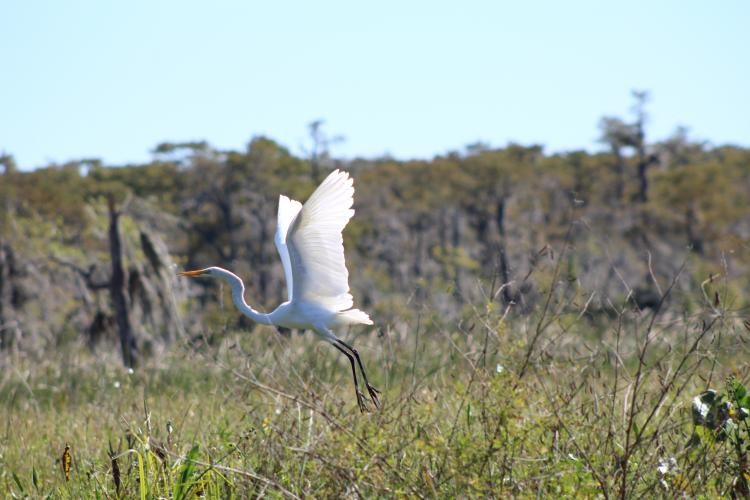Louisiana, nestled in the heart of the Atchafalaya National Heritage Area, boasts a diverse landscape that makes it a prime destination for birdwatchers. This guide highlights Louisiana’s avian diversity, resources for birders, and premier locations to spot various species. The partnership with the American Birding Association (ABA) resulted in a comprehensive birding guide, part of the ABA’s Birdfinding Guide series. This guide includes directions to over 100 birding areas, maps, information on Louisiana’s specialty birds, and stunning photography, along with checklists of birds and other wildlife.
The Atchafalaya Basin is a critical ecosystem supporting a wide range of wildlife. From coastal wetlands to rolling hills and prairies, Louisiana features diverse habitats like fresh and saltwater marshes, cheniers, upland pines, cypress-tupelo swamps, bottomland hardwood forests, and open meadows. These varied landscapes offer exceptional birding opportunities.
Exploring Louisiana’s Birding Hotspots
Louisiana’s diverse habitats are home to nearly 400 bird species. The area serves as a major wintering ground for ducks and geese, and eagles are frequently observed. In warmer months, keep an eye out for swallow-tailed kites, Swainson’s warblers, and Bachman’s sparrows.
eBird Trail Tracker
The Cornell Lab of Ornithology offers the eBird Trail Tracker, allowing visitors to document bird sightings within the Atchafalaya National Heritage Area. Birdwatchers can upload observations to eBird, allowing others to see where the best birding action is happening. To join the eBird tracker community and submit your sightings, visit the eBird website.
Notable Birding Locations
- Lake Martin/Cypress Island Preserve: Renowned as a significant wading-bird rookery.
- Jefferson Island/Rip Van Winkle Gardens: A smaller wading-bird rookery known for its abundant spoonbills.
- Whiskey Bay Road: Ideal for spotting local breeders like the Prothonotary Warbler, Swainson’s Warbler, and Painted Bunting.
Birding Organizations in Louisiana
Connecting with local birding organizations can enhance your birding experience in Louisiana. Here are a few to consider:
Baton Rouge
- Audubon Society: Contact Eric Liffman, President, at 225-766-8775. Jeff Harris leads field trips (225-571-3895). Visit their website for more information.
- Kids Who Bird: Sponsored by the Baton Rouge Audubon Society, contact Jane Patterson at 225-753-7615.
Houma
- Terrebonne Bird Club: Paul Schaub (President, 985-519-0009) and Kathy Rhodes (Vice President, 985-872-9591).
Lafayette
- Louisiana Ornithological Society: Linda Stewart Knight (President) and Judith O’Neale (Treasurer, 337-981-1011). More information can be found on their website.
Optimizing Your Birding Experience in Louisiana
To maximize your birding adventures in Louisiana, consider these helpful tips:
- Timing: Spring and fall migrations offer peak birding opportunities. Winter is excellent for waterfowl.
- Gear: Binoculars, a field guide to birds of North America, and appropriate clothing are essential.
- Respect Wildlife: Maintain a safe distance from birds and their habitats. Avoid disturbing nesting areas.
- Local Expertise: Consult with local birding organizations or guides for the best locations and recent sightings.
Essential Birding Resources
Leveraging available resources can greatly enhance your birding endeavors in Louisiana. The ABA’s birdfinding guide is an excellent starting point, offering detailed directions and insights into prime birding spots. Additionally, online platforms such as eBird provide real-time data on bird sightings, helping you pinpoint areas with high bird activity.
Conclusion: Embark on Your Louisiana Birding Adventure
Louisiana presents an extraordinary birding experience, thanks to its diverse ecosystems and strategic location along the Mississippi Flyway. Whether you’re a seasoned birder or a novice, the state’s rich avian life and well-organized birding community offer something for everyone. Explore the Atchafalaya Basin, visit the local preserves, and connect with fellow bird enthusiasts to fully appreciate Louisiana’s avian treasures. Remember to contribute your sightings to eBird to help other birders discover the best locations.

